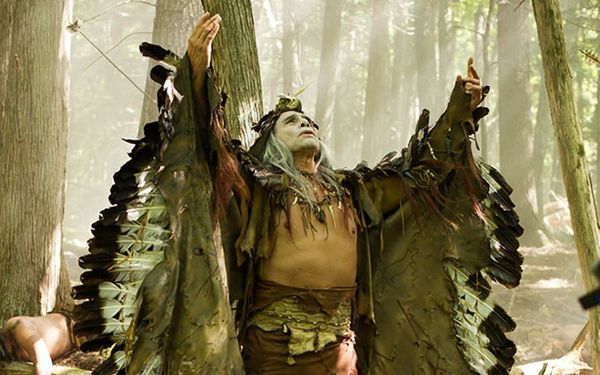Eye For Film >> Movies >> Hochelaga, Land Of Souls (2017) Film Review
Hochelaga, Land Of Souls
Reviewed by: Amber Wilkinson

If there’s one thing Canadian director François Girard (Red Violin, Silk) likes, it’s a challenge, preferably one of epic proportions. He sets himself one here, retelling the tale of Montreal’s history through not one, but two, opposing framing devices – one a contemporary archaeological exploration at Percival Molson Stadium and the other the aftermath of an Iroquois massacre in 1267. He constantly digs at the connection between the two, as embodied by archaeologist Baptiste Asigny (rapper Samian), who himself has Iroquoian heritage.
There’s a sense of micromanaged precision about this tale’s unfolding, as Girard is determined that every last piece of his centuries-spanning jigsaw must ultimately snap into its pre-ordained slot. This approach requires patience on the part of the viewer, as the writer/director refuses to be rushed or to stint on the melodrama. Artefacts from the archaeological dig – itself triggered by a modern-era tragedy – trigger episodes from Montreal’s past, including the ‘first contact’ between the Iroquois and Jacques Cartier ((Vincent Perez); a 17th century doomed romance between a French trapper (Emmanuel Schwartz) and his Algonquin love Akwi (Tanaya Beatty); and a mid-19th century tale of fugitive Patriots fleeing Loyalists.

In short, there’s a lot going on and although it is technically beautifully realised and features an impressively varied and supportive score from Terry and Gyan Riley, not all of Girard’s connections fully work. With so many elements, the juggling occasionally feels more like jostling - but he is saved by his measured approach to the material, which although initially feeling overwhelming, soon begins to develop a rhythm that helps you to go with the flow. A glowing cross on the hill above the football stadium is a constant reminder of who won the culture wars in the years after Cartier found the Hochelaga village of the film’s title, but Girard takes the classically romantic view that a land never fully forgets its history and lives on through the spirits of those who come after.
There are initial suspicions that less would be more – particularly in the modern-day segment, which also includes a somewhat forced nod to increased global multi-culturalism through the use of Arabic. But these are blown away because Girard is so committed to "more" that he convinces us that’s what is needed. And if there’s an unevenness to the individual stitches he is using to construct this sprawling tapestry, the overall emotional picture that emerges is satisfying nonetheless.
Reviewed on: 27 Jun 2018
















